
The Einherjar are the brave fallen warriors who live in Valhalla and are destined to join the gods in the final battle of Ragnarök. This concept has been embraced in modern Viking culture, with all warriors wishing to live and die in a way worthy of Valhalla. But what did it really mean to join the Einherjar in the Viking age ?
The Lone Warriors
The term Einherjar, or “einheri” in the plural, is a combination of two Old Norse words, “einr” which means “one” or “alone” and “herjar” which means “to raid” or “army”. So, their name can be literally interpreted as “those who fight alone” or “the lone warriors”.
This may refer to their individual valor or the fact that, like all men, ultimately, they died alone in battle. But together they form part of a host of warriors.
Ascending to Valhalla
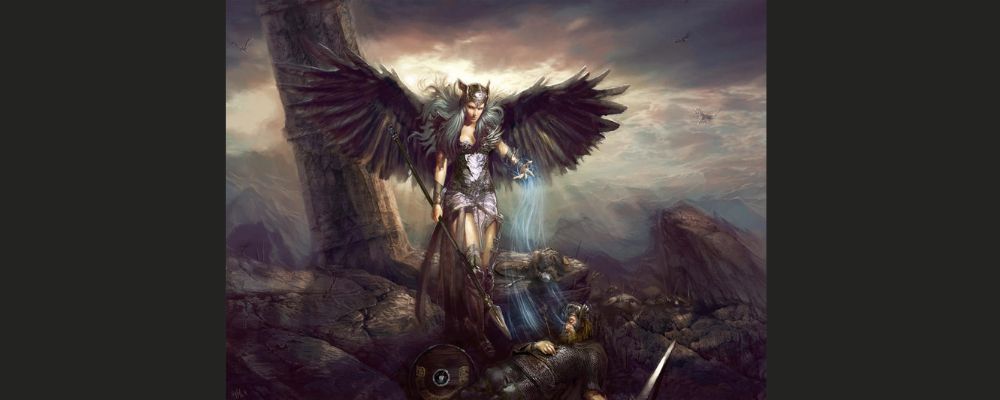
With the assistance of the Valkyries, a group of divine female warriors, Odin chose the bravest fallen warriors from battlefields to ascend to Asgard, the realm of the gods, and dwell in Valhalla, one of Odin’s halls.
This was not the only potential afterlife for warriors. The sources imply that the goddess Freyja also chose brave fallen warriors to live in her realm, Folkvangr, and she may even have had first choice before Odin.
They might also find themselves in Helgajfell, which seems to be a general name for the underworld. It was a reflection of the world of the living, with people doing more or less what they did when they were alive. So, warriors presumably continued to be warriors.
But Viking warriors also feared that they might end up in Helheim. While this was not an underworld for the wicked or a place of punishment, it does seem to have been considered an unworthy afterlife for a warrior. This is surely one of the many messages of the story of the death of Balder.
Balder was the son of Odin and Frigg and was considered the best of the gods. While the story of his death is complex and linked to the start of Ragnarök, one key element of the story is that Balder did not die in battle, but rather in a game gone wrong. As a result, his soul was taken to Helheim. The gods tried to bargain for his soul, presumably so that it could remain in Asgard. But they failed to reach a deal with Hel, the giantess that oversees Helheim.
While Odin was a god of death, who oversaw Valhalla and also sent Hel to be the queen of the underworld, he could do nothing to retrieve his son’s soul. His powers over life and death were limited.
Spells for the Dead

The sources suggest that there may have been a magical or mystical element associated with sending the dead to Valhalla. In the Hakonarmal, it is said that words were spoken over the grave of Hakon that would put him on his way to Valhalla.
It also seems likely that the Valknut, the symbol of three interlocking triangles, was the symbol of Valhalla. The name Valknut means “knot of dead warriors”, but this is a modern name and we do not know what the symbol was called in the Viking age.
However, the symbol always appears in combination with the dead, Odin, or both, suggesting a link with Valhalla. The symbol may have been used to indicate that the fallen warrior was on their way to Valhalla. It may also have been a magical symbol designed to call on the Valkyries to transport his soul and ward off other types of entities that might want to take the dead to a different underworld.
Read more about the Valknut symbol here.
Life in Valhalla
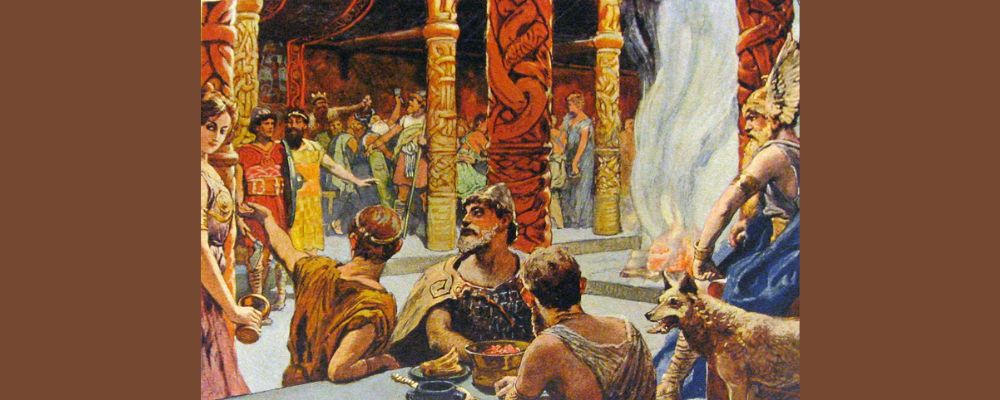
Most of what we know about Valhalla comes from the Poetic Edda, written by the Icelandic Christian in the 13th century. The idea of Valhalla is certainly much older, as it is also mentioned in passing in the 10th-century poem Harkonarmal, and the 10th-century poem Eiriksmal about Eric Bloodaxe. But Sturluson almost certainly introduces Christian ideas into his description of Valhalla, just as he introduces them into his description of Helheim, which seems much more like the Christian version of Hell in his telling.
Valhalla is one of the halls belonging to Odin, who is sometimes called “Valfodr”, which means “father of the slain”, suggesting that the Einherjar were like his adopted sons. The hall is described as enormous and majestic and thatched in golden shields. It has many doors and space for all the warriors, despite the fact that they have been chosen since the beginning of history.
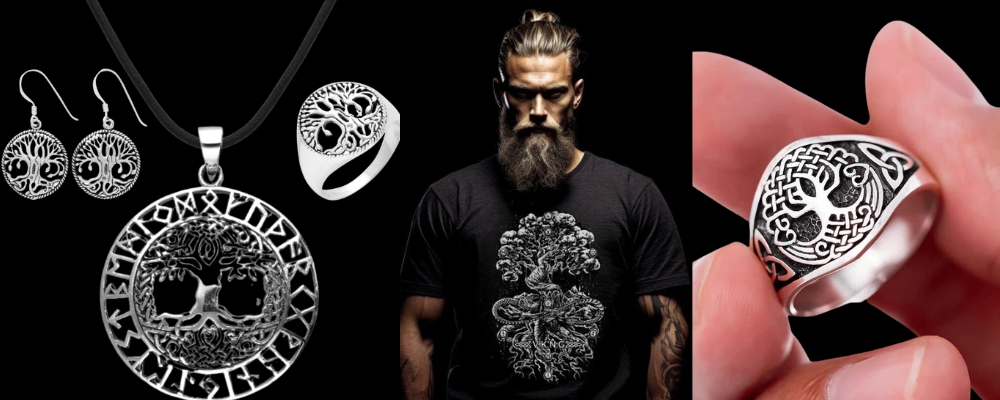
There the Einherjar are served mead by the Valkyries, which is taken from the udders of the goat Heidrun, who lives on the roof of Valhalla eating leaves from a tree called Laeradr, which may be Yggdrasil itself. It is interesting that despite being formidable warriors, the Valkyries are placed in a more subservient feminine role within the hall. There is also no mention of fallen shieldmaiden, female warriors, being taken to Valhalla.
There are scenes depicted in modern manuscripts of Odin taking the shieldmaiden Verborg to Valhalla, but this is not mentioned in the original telling of the story by Saxo Germanicus, only that she died bravely.

Each night the Einherjar eat meat from a creature called Saehrimnir. They can eat their fill because it is resurrected each night to be eaten again. The sources imply that the animal is a giant boar or a pig, and the meat is prepared every day by the cook Andhriminir in the pot Eldhrimnir.
There is also an implication that the Einherjar dine at Odin’s own table, as it is the table where he feeds meat to his two wolves Geri and Freki. Odin himself does not eat and drinks only wine.
The sources imply that Valhalla functions more or less like the great hall of any chief. The bard Bragi, who may be a god of a mortal brought to Valhalla for his skill as a bard, seems to have been responsible for greeting new arrivals and composing poetry about their great deeds.
In the Eiriksmal Odin hears about the coming of the Norwegian king Eric Bloodaxe and sends the heroes Sigmund and Sinfjotli to meet him, while Bragi asks Odin why he has let such a formidable warrior die.
When the Einherjar are not eating and drinking their fill, they put on their war gear and fight one another in Odin’s courtyard. While they surely enjoy the challenge, this is also training for Ragnarök.
The Einherjar at Ragnarök

According to the prophecy of Ragnarök, the end of the world in Norse mythology, when Heimdall blows his horn in warning and Odin returns from visiting Mimir at the Well of Wisdom for guidance, the Einherjar will don their armor and descend to the field of Vigridr.
They will be led by Odin, using a golden helm and his spear Gungnir, and they will confront the enemy forces. It is noted that they will fight the wolves, suggesting that the wolf children of the giantess Angrboda that live in the Ironwood will join the battle.
Sadly, Odin will soon be devoured by the great wolf Fenrir, who will swallow the king of the gods whole. Many Einherjar will probably die fighting alongside him. Like the god, most of the warriors will probably die in battle before the broken and burned world sinks back into the waters of chaos.
The Einherjar and the Harii
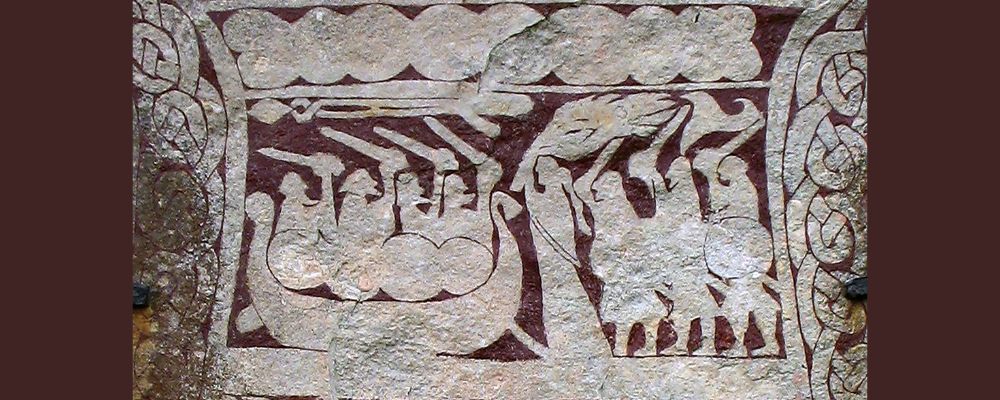
There is some evidence to suggest that the Einherjar are inspired by the Harii, a group of warriors from Germanic folklore attested as early as the 1st century.
The Roman author Tacitus describes the Harii as particularly savage warriors who paint their bodies black, don black shields, and only fight on the darkest of nights. They are a ghastly army that defeats their enemies through ghoulish terror as much as martial skill.
Modern scholars suggest that these warriors entered an ecstatic relationship with Odin, not unlike the Berserker warriors with the spirit of the bear, and this could be the root of the connection between Odin and the Einherjar.

It is also thought that both the Harii and the Einherjar may be linked with the warriors that fight in the Hjadningagig, or the eternal battle.
The battle was caused by a love triangle and a curse between King Hedin, the hero Hogni, and the woman Hildr. Their armies meet on the field, but Hidlr curses the troops so that each day they die on the field and are then magically resurrected to fight again the next day. The curse will only be broken at Ragnarök, or by the conversion to Christianity as told in the version of the story given in the Saga of Olaf Tryggvason.
This old story derived from German folklore clearly had a place in the Viking world. Not only is it mentioned a number of times in surviving texts, but it may also be depicted on the Stora Hammars I Stone from Gotland.
Joining the Ranks of the Einherjar
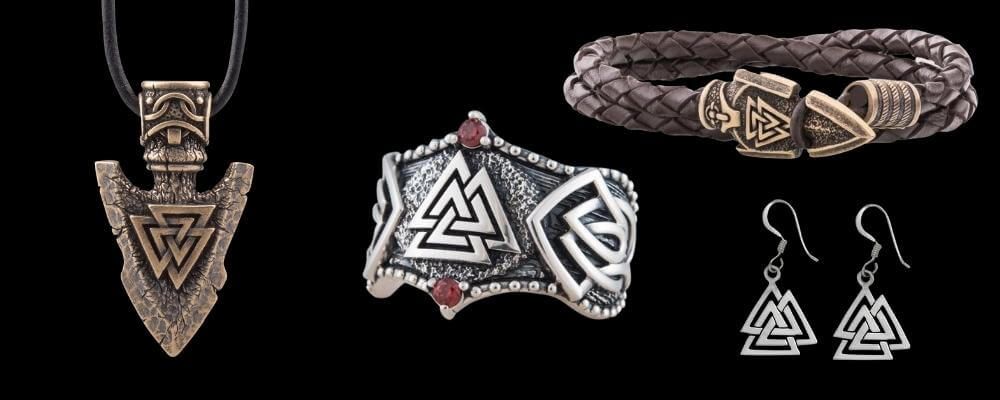
In many modern depictions of the Viking age, warriors are depicted as going into battle without fear, in the knowledge that if they die in battle they will be taken to Valhalla to feast alongside historic heroes, including their own ancestors. This seems like a fairly accurate view of what may have happened in the Viking Age.
But it does not embrace the apparent fear of not making it to Valhalla. Spells and rituals were used to ensure the outcome, and the Vikings would even sometimes stab warriors who died of illness to make it appear as though they had died in battle. It also seems to have represented a permanent division from certain loved ones, since there is no evidence for women in Valhalla. But this may be more the result of the vision of the male authors that record the story of Valhalla than the genuine Viking age belief.
It is very likely that the Valknut was the symbol of Valhalla. As a result, today it has become a symbol not only of the great hall but also of the belief and courage with which modern Vikings need to live their lives to earn their place in Valhalla. You can find many Valknut pieces in the VKNG collection.








